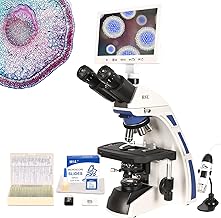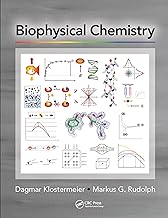Summary of "Biophysical Chemistry 2018 - Lecture 1"
Summary of Biophysical Chemistry 2018 - Lecture 1
Main Ideas and Concepts
1. Course Introduction and Structure
- Instructor: Eric Lien Årnes, Professor of Biophysics at SCI Life Lab.
- The course alternates between chemistry and physics topics, progressively layering concepts.
- Emphasis on understanding basic chemistry and physics principles to interpret protein structure and function.
- Central dogma highlighted: Sequence → Structure → Function.
- Aim: Understand how amino acid sequences determine protein structure, which in turn determines function.
2. Amino Acids: Building Blocks of Proteins
- Amino acids are small molecules with a central alpha carbon, amino group, carboxyl group, hydrogen, and a variable R group.
- They are zwitterionic (carry both positive and negative charges).
- All amino acids (except glycine) are chiral; only L-amino acids are genetically encoded.
- Chirality is fundamental to biological function and drug design.
- Amino acids classified by size, polarity, charge, and special properties (e.g., cysteine, proline, glycine).
- Importance of understanding amino acid properties rather than memorizing structures.
3. Genetic Code and Protein Synthesis
- Genetic code redundancy: 64 codons encode 20 amino acids plus stop signals.
- Codon frequency influences amino acid abundance.
- Peptide bonds form via polymerization, creating heteropolymers (proteins made of different amino acids).
- Frederick Sanger’s sequencing of insulin established the concept of unique protein sequences.
4. Protein Structure and Folding
- Proteins range from small (~100 residues) to very large (e.g., titin with 30,000 residues).
- Proteins fold into unique 3D structures, stabilized by peptide bonds, hydrogen bonds, and other interactions.
- Secondary structures:
- Alpha helices: stabilized by hydrogen bonds every 4 residues.
- Beta sheets: formed by hydrogen bonds between strands; can be parallel or antiparallel.
- Folding driven by physics and free energy minimization.
- Levinthal paradox: despite astronomical possible conformations, proteins fold rapidly, implying guided folding pathways.
5. Experimental Techniques in Structural Biology
- X-ray crystallography:
- Traditional method to determine atomic structures of proteins.
- Requires protein crystals; challenging for membrane proteins.
- Data interpreted via Fourier transforms and modeling.
- Cryo-electron microscopy (cryo-EM):
- Recent breakthrough allowing structure determination without crystallization.
- Resolution improved dramatically, enabling visualization of side chains.
- Revolutionized membrane protein structural biology.
- Examples of Nobel Prize-winning work in protein and nucleic acid structure determination.
6. Physical Chemistry of Proteins
- Importance of torsion (dihedral) angles Phi (φ) and Psi (ψ) in protein backbone conformation.
- Ramachandran plots map allowed torsion angle regions; glycine and proline have distinct conformational preferences.
- Protein folding and structure driven by interplay of:
- Steric constraints (atom clashes)
- Hydrogen bonding
- Electrostatics (partial charges and dipoles)
- Van der Waals forces
- Alpha helices have a macrodipole due to aligned peptide bonds.
- Electrostatic interactions are strong and long-range, crucial for protein stability and function.
7. Biological Relevance of Structure
- Protein function depends on precise structure; mutations can disrupt function and cause disease.
- Ion channels as an example: selectivity for potassium over sodium explained by physical chemistry principles (hydration shells, electrostatics).
- Protein folding and stability linked to thermodynamics and free energy landscapes.
8. Outlook and Course Logistics
- Future lectures will delve deeper into physics (free energy, Boltzmann distributions).
- Emphasis on integrating physics and chemistry to understand biological function.
- Encouragement to read classical papers to understand the scientific discovery process.
- Study visits and practical sessions planned.
- Importance of active participation and asking questions.
Detailed Methodologies and Instructional Points
Classification of Amino Acids
- By size: small vs. large
- By polarity: hydrophobic vs. polar
- By charge: charged vs. neutral
- Special cases: cysteine, proline, glycine
- Chirality considerations: only L-amino acids encoded
Protein Folding Considerations
- Understand peptide bond rigidity (partial double bond character).
- Use torsion angles φ and ψ to describe backbone conformation.
- Use Ramachandran plots to identify allowed conformations.
- Recognize alpha helices and beta sheets as common secondary structures.
- Appreciate the Levinthal paradox and its implications for folding pathways.
Category
Educational
Share this summary
Featured Products

Organic Chemistry Fundamentals QuickStudy Laminated Reference Guide (QuickStudy Academic)
View on Amazon

HSL Trinocular Compound Microscope for Adults Professional,9 inch LCD Digital Microscope kit,Electron microscopes Light,Biological Microscope LAB with Screen 400x 1000x Micro Scope
View on Amazon
